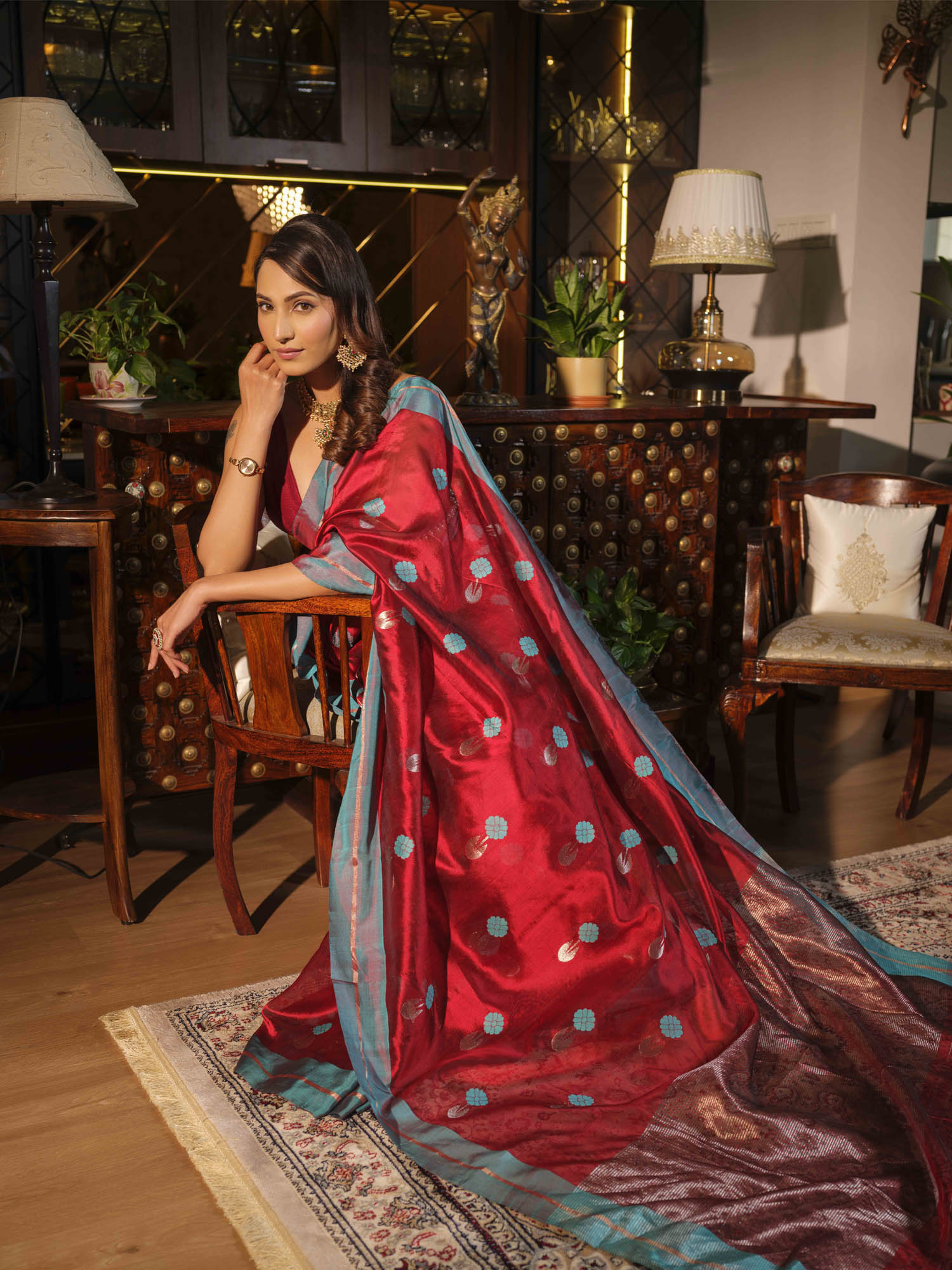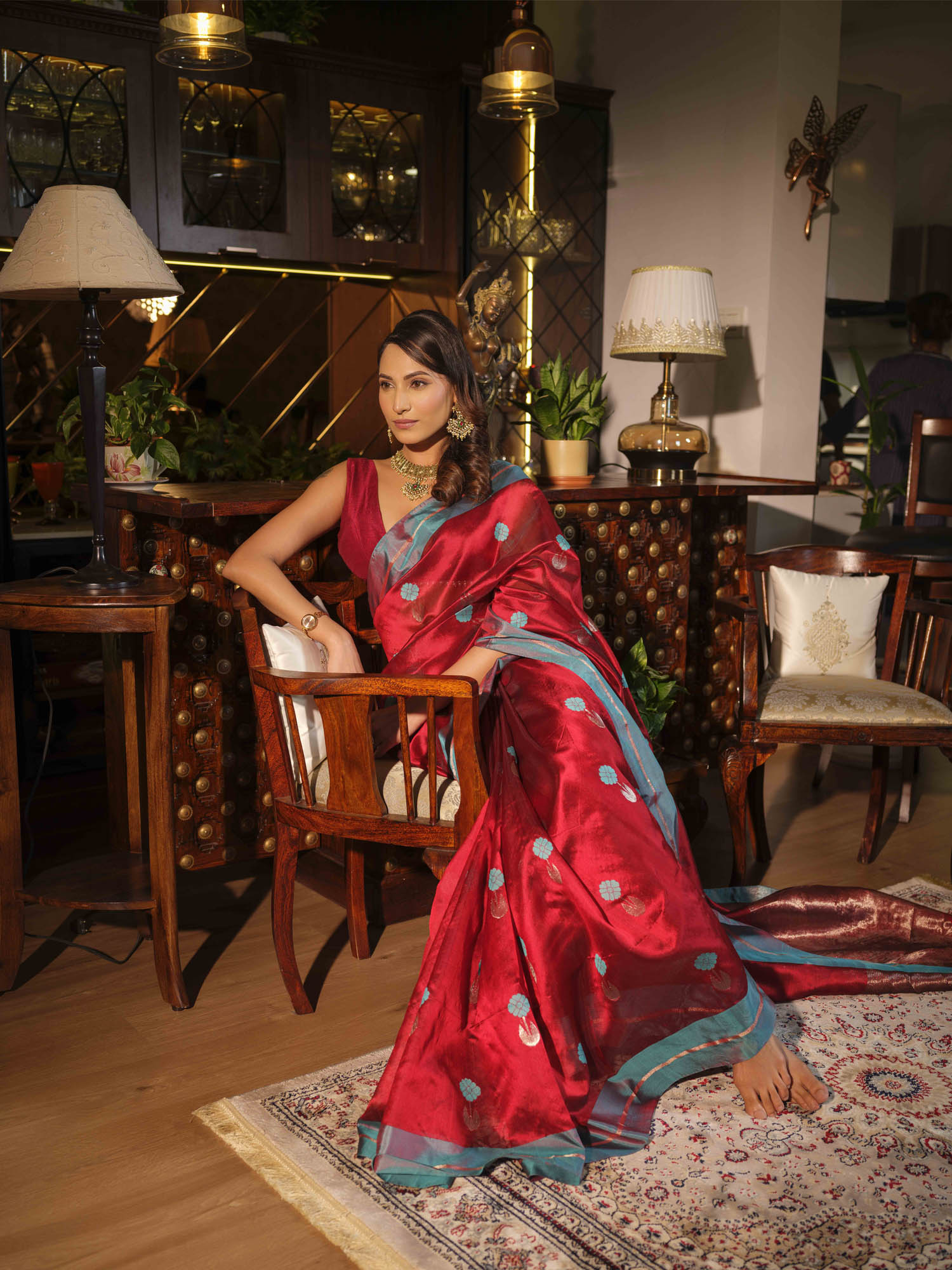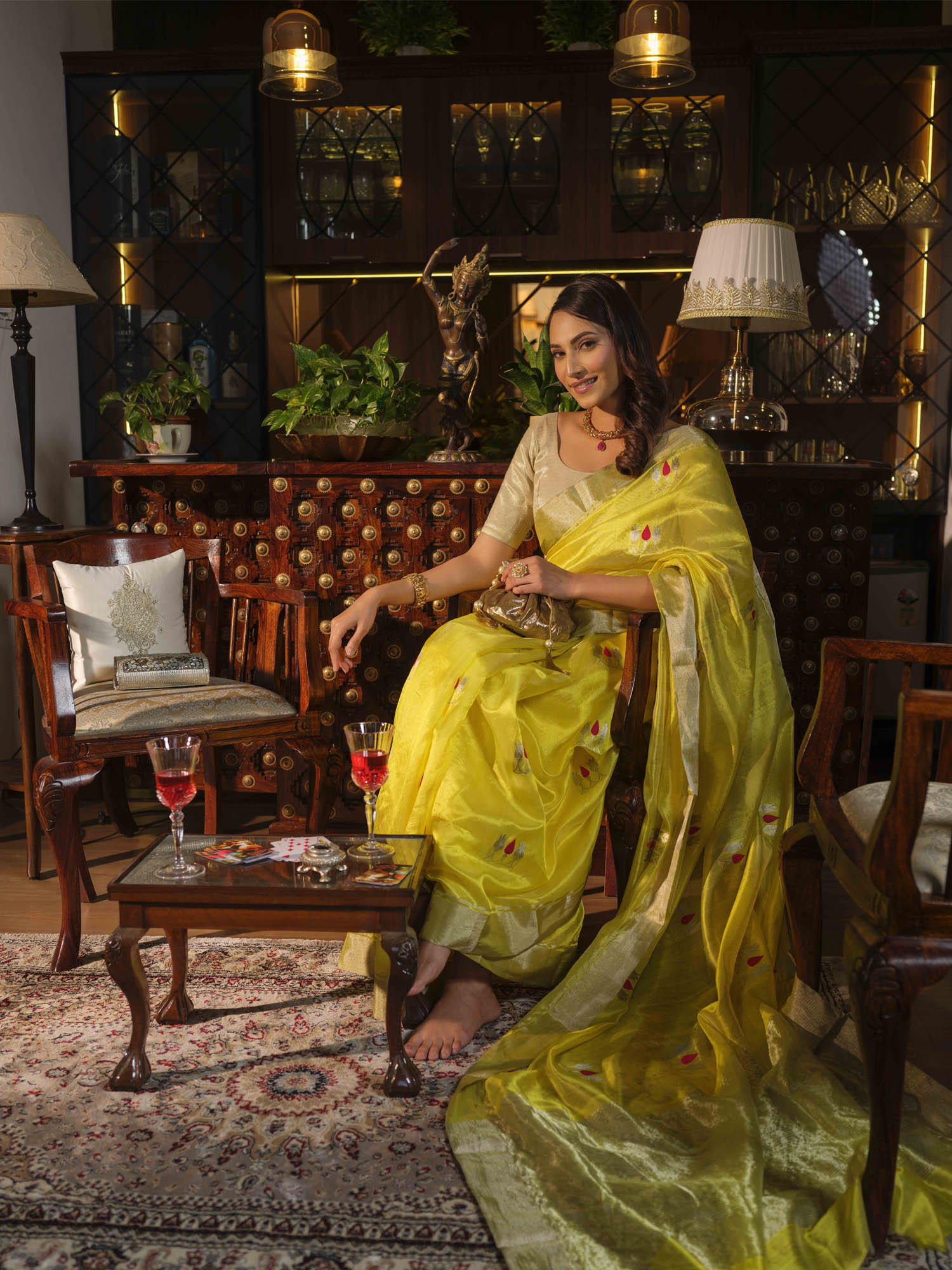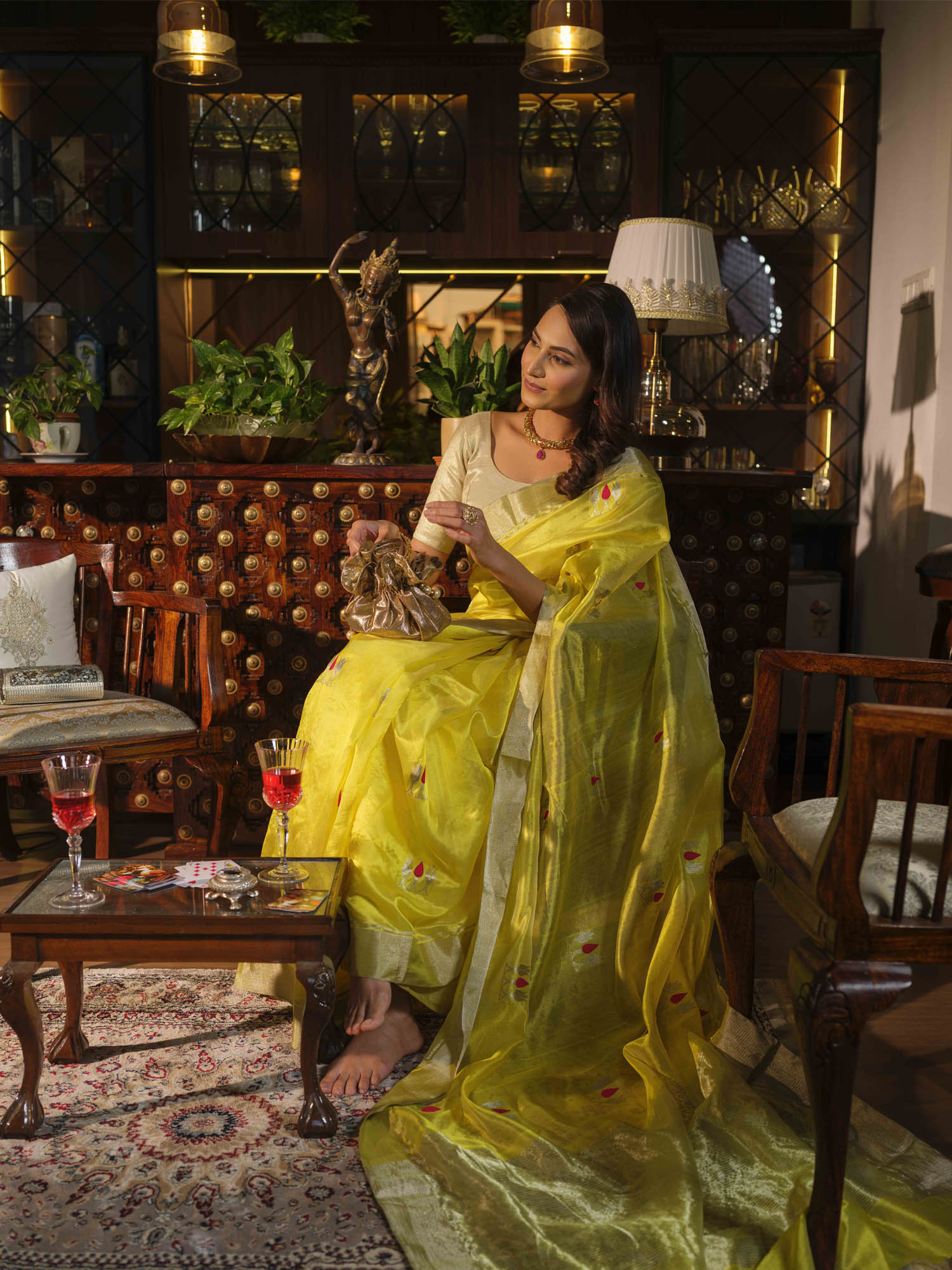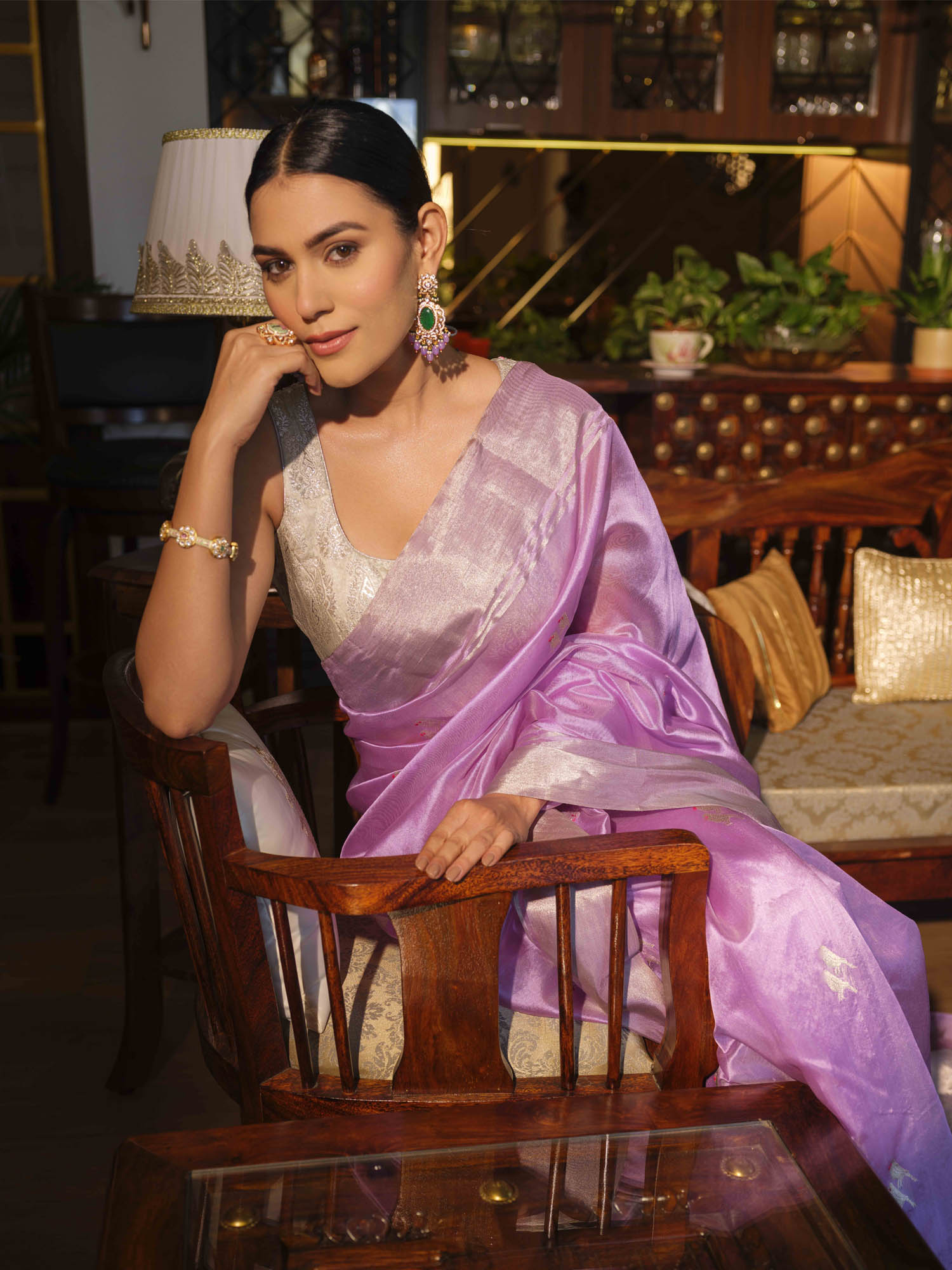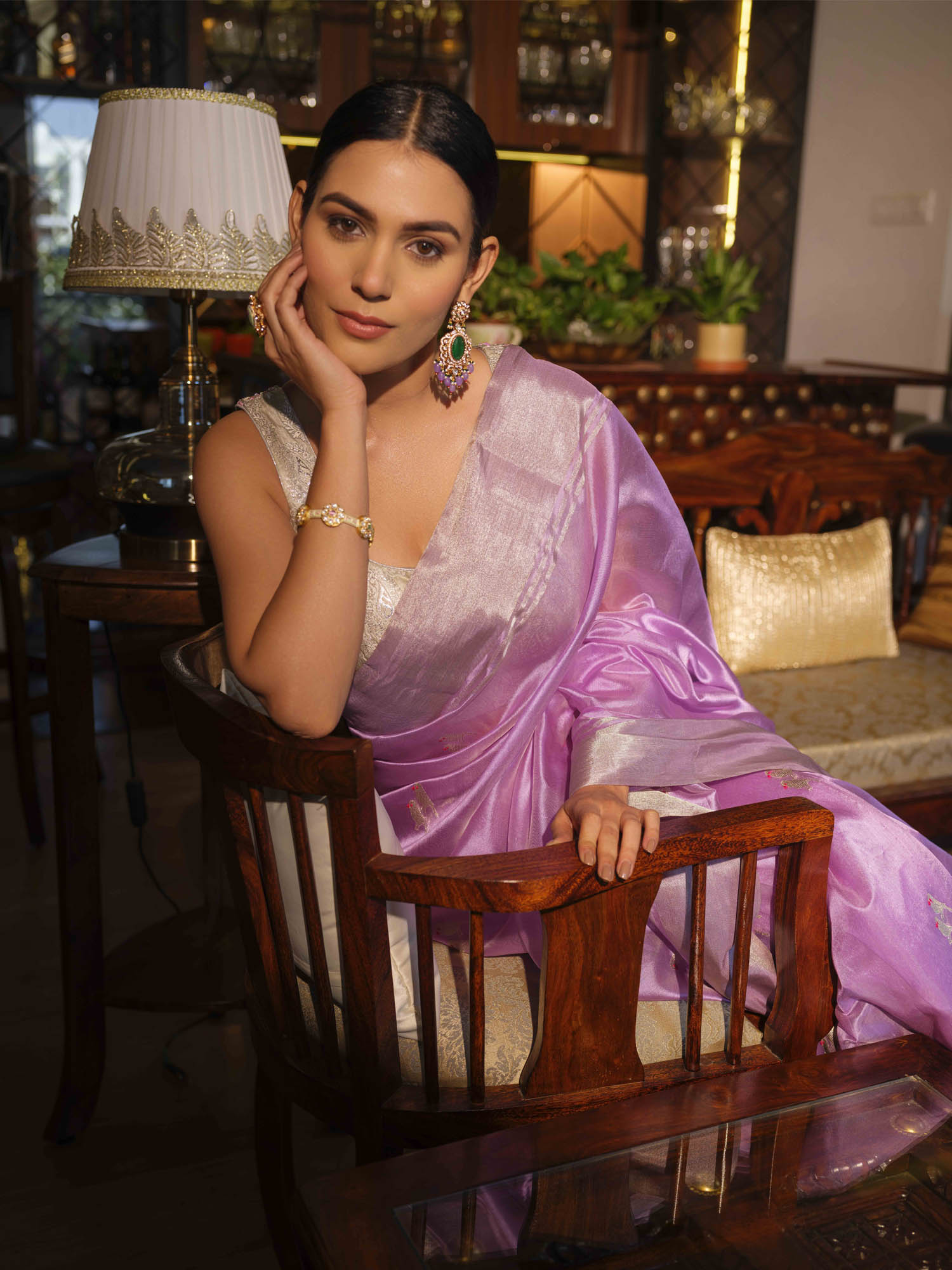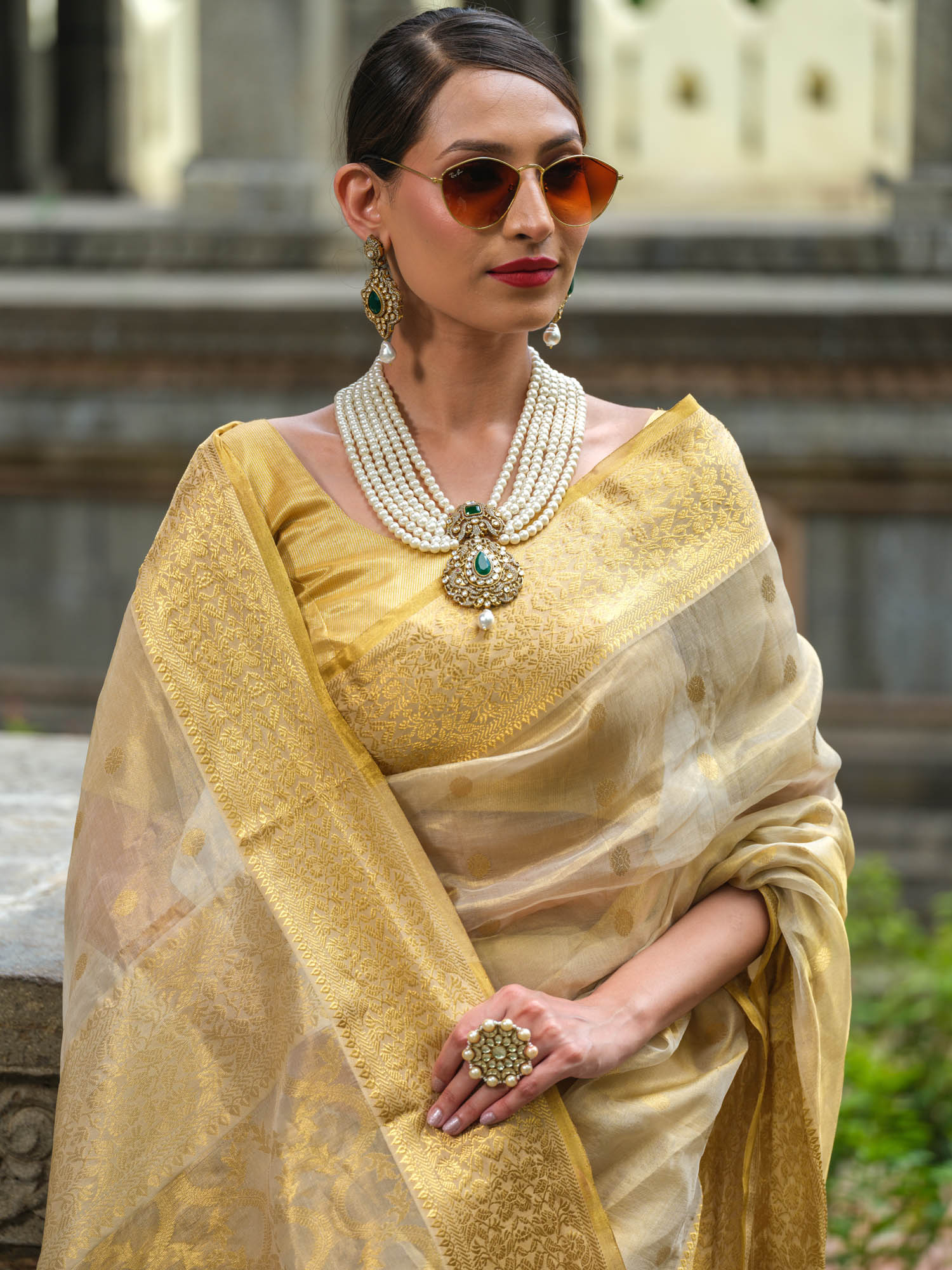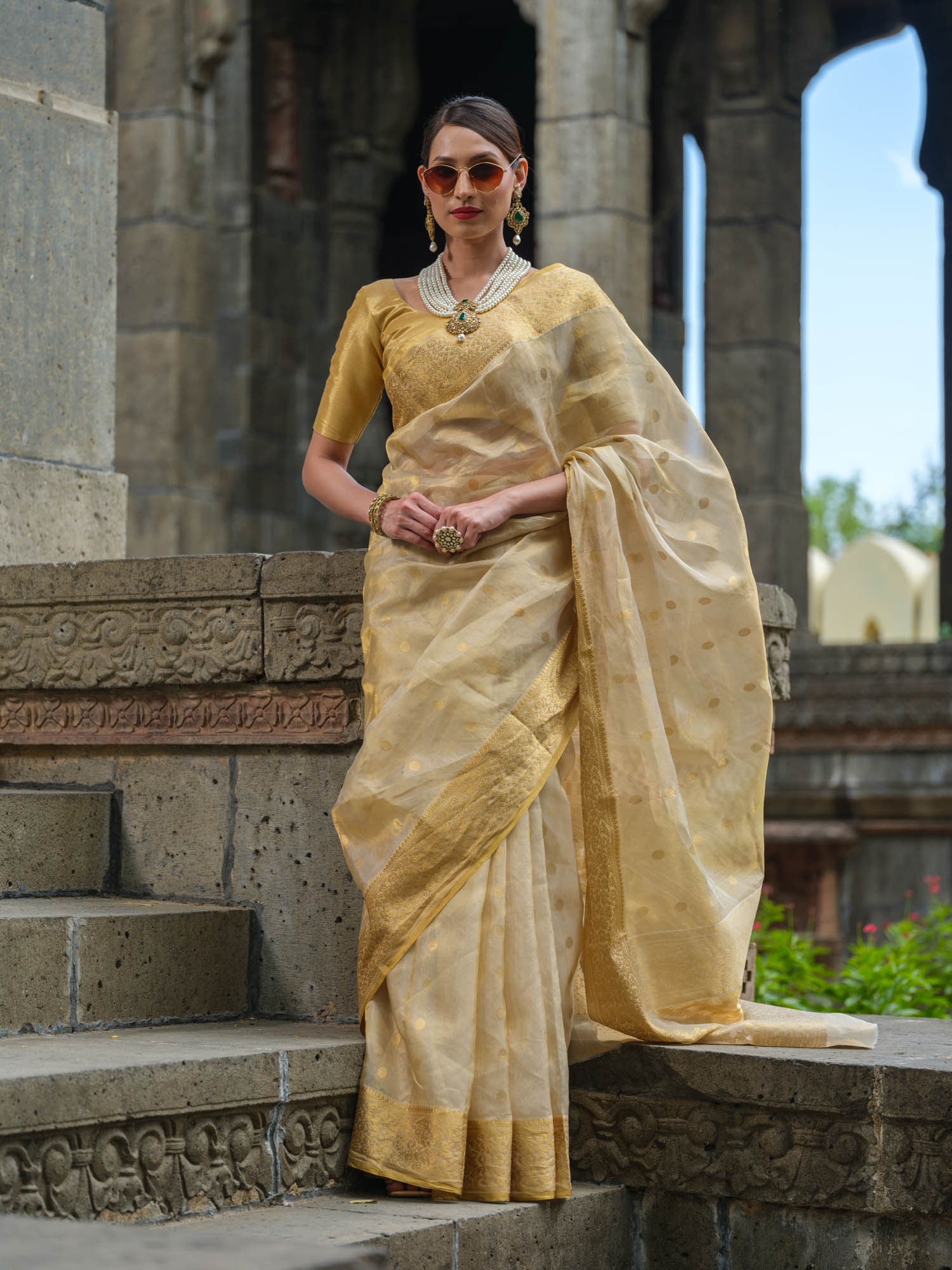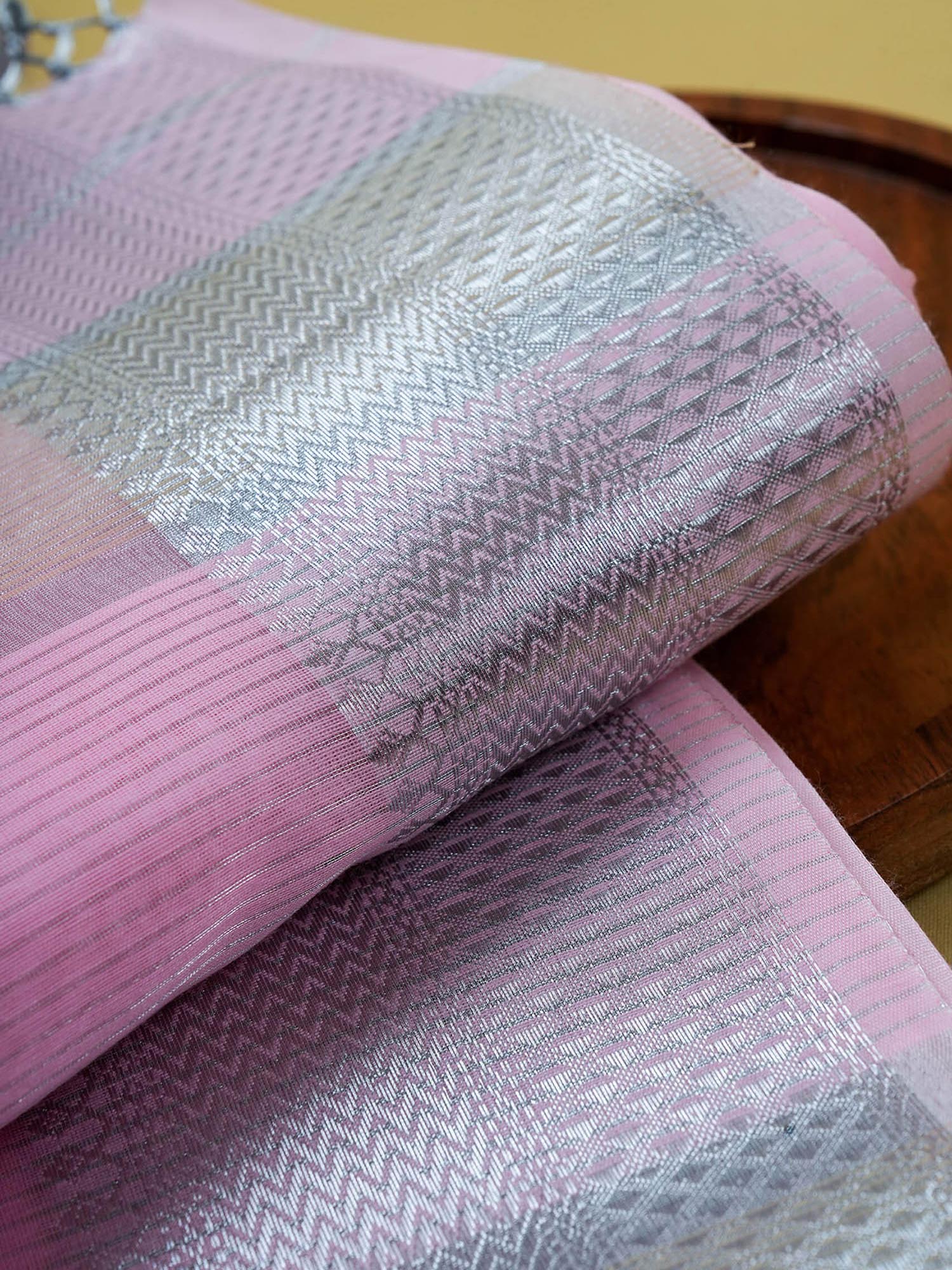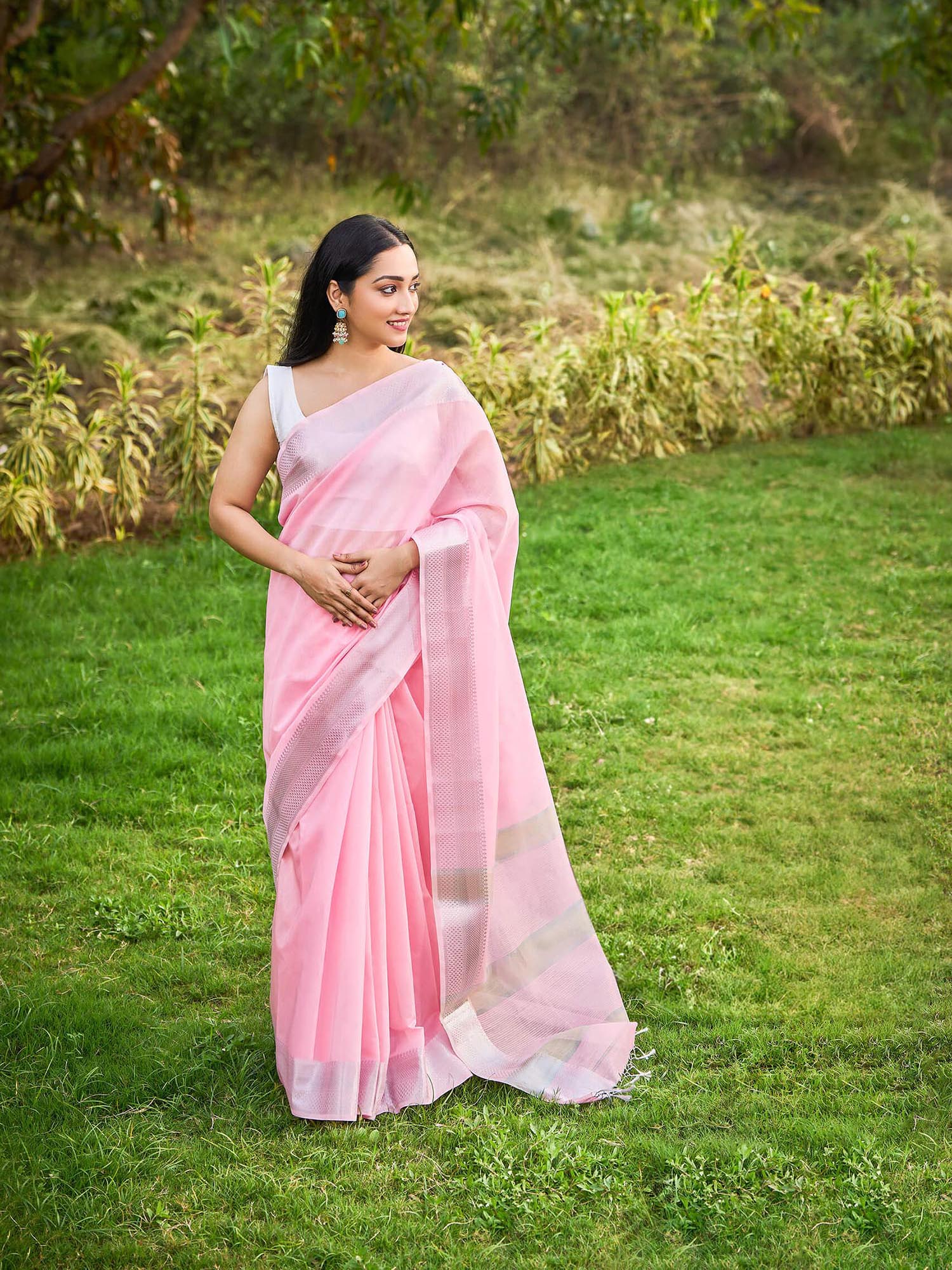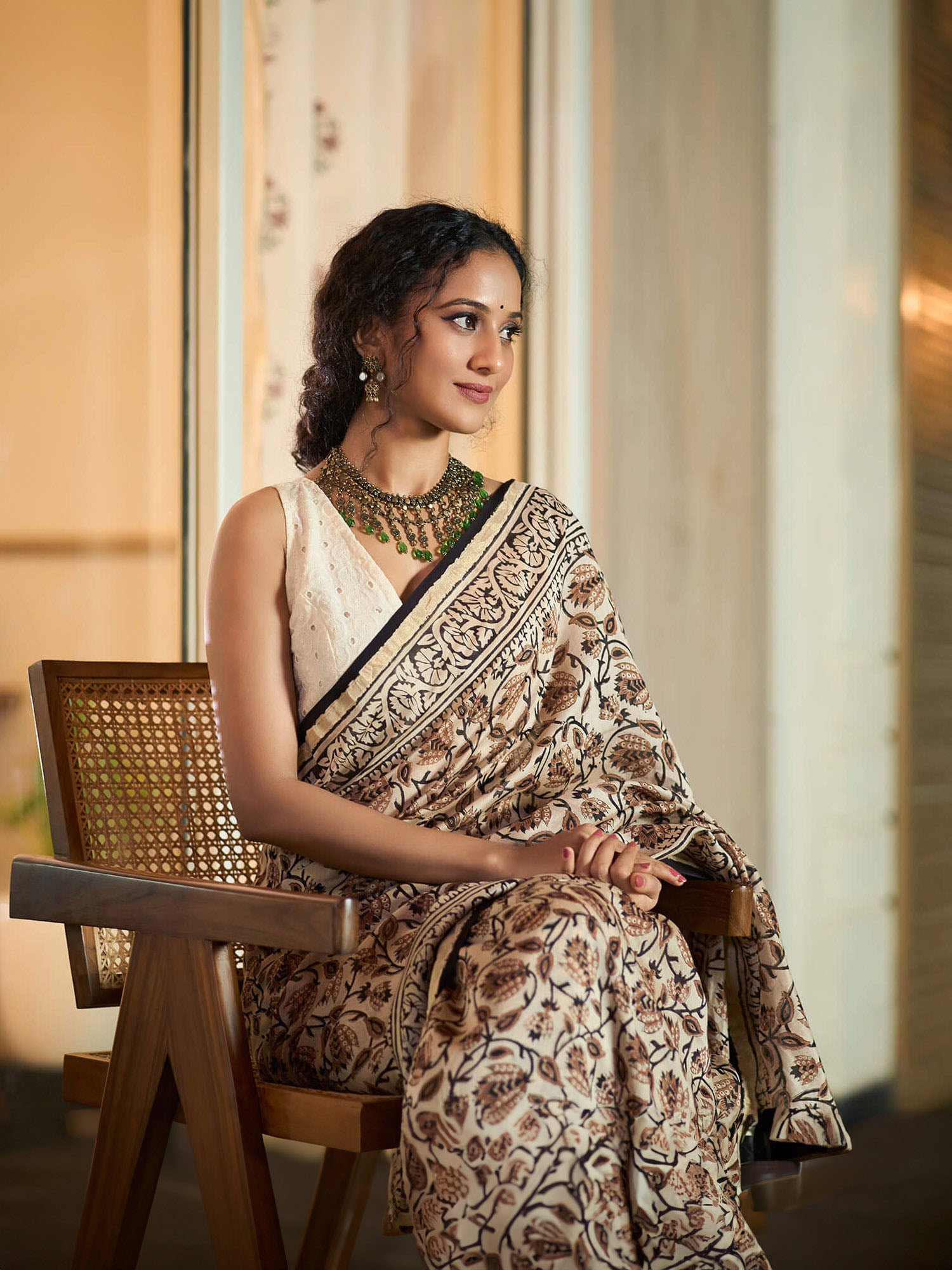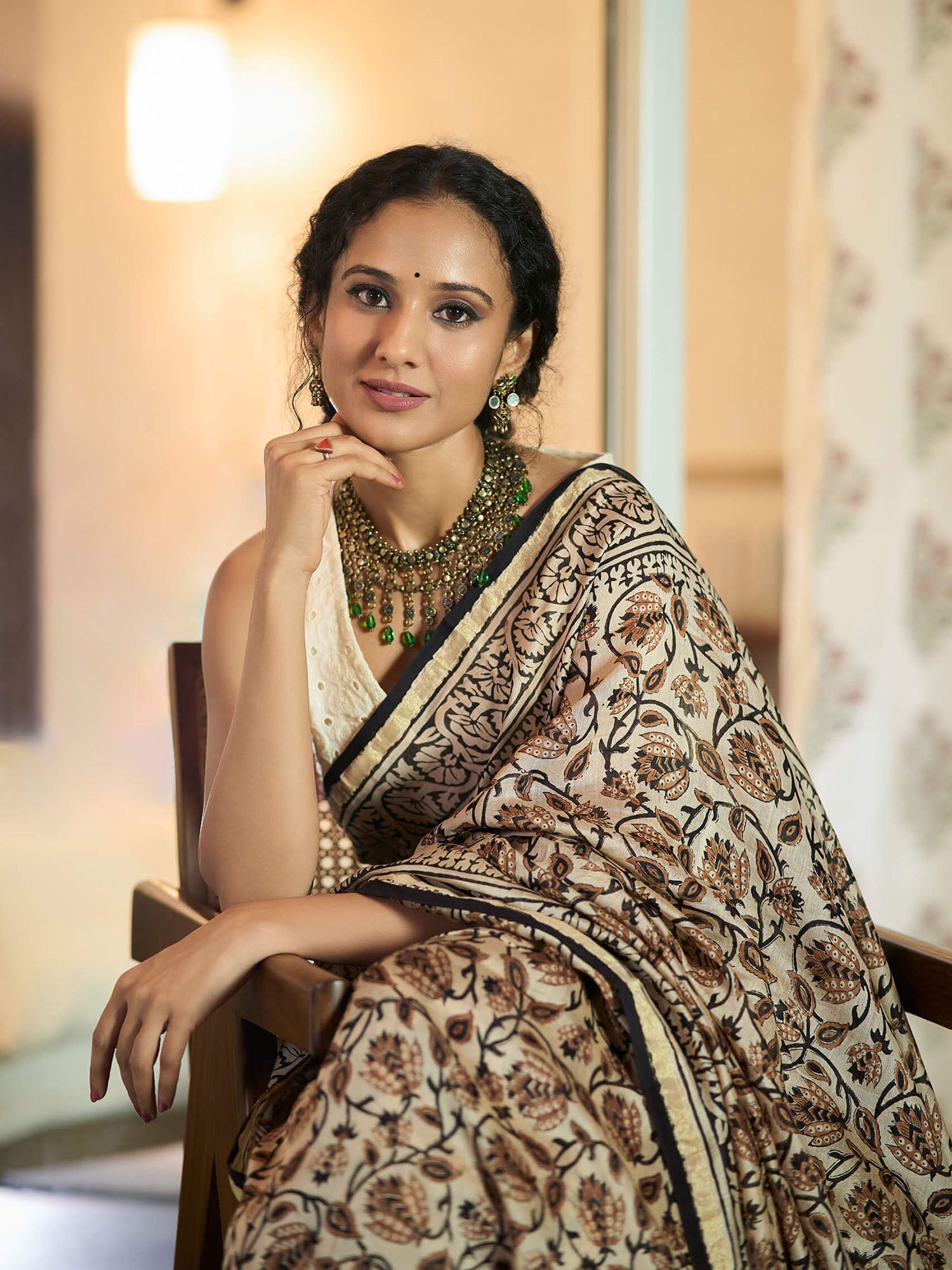Maheshwari Sarees : A Legacy of Craftsmanship
The genesis of Maheshwari sarees can be traced back to the 17th century in the vibrant city of Maheshwar, Madhya Pradesh. Holkar royalty and specifically Rani Ahliya Bai Holkar, known for their patronage of arts and crafts, played a major role in uplifting the craft involved in making Maheshwari Saree, on handloom .
Looms hummed with skilled artisans weaving tales of bravery, devotion, and nature onto silk and cotton threads. These sarees, adorned with zari work like creepers and lotus flowers, became a symbol of elegance and cultural pride.
Why are Maheshwari Sarees so special?
The beauty of a Maheshwari saree lies just in its aesthetics, but also in the rich symbolism woven into its very fabric. The "Ekdaal" border, a hallmark of this saree, signifies unity and strength. The "Chaturbhuja" motif, with its four arms, represents Lord Vishnu, the protector. Floral patterns symbolize nature's bounty, while geometric designs speak of precision and order. Each motif, handwoven, with so much precision and perfection, tells a story waiting to be discovered and be known.
Maheshwari Cotton Sarees in the Modern World
The 20th century saw a decline in the demand for Maheshwari Cotton sarees and the handloom industry took a hit, particularly artisans working on Maheshwari cotton sarees, faces challenges in sustaining their art and legacy due to competition from power looms and fast fashion, rising raw material costs, lack of marketing and branding skills, and changing consumer preferences.
Despite these challenges, Maheshwari cotton sarees retain their cultural significance, uniqueness, and authenticity. It's essential to recognize and support the preservation of this traditional art form and the artisans who dedicate their lives to creating these exquisite textiles. Today, Maheshwari sarees are celebrated not just for their historical significance, but also for their sustainable and ethical production process, as compared to power loom. The use of natural and non-toxic fibers and dyes makes them an eco-conscious choice, while supporting the livelihood of skilled craftspeople, adds a touch of social responsibility to your wardrobe.
Beauty of Maheshwari Sarees at Mrida
Mrida, a passionate advocate for India's handloom heritage, offers a captivating collection of Maheshwari Cotton Sarees. Explore sarees crafted from the finest silk and cotton, each a testament to the enduring legacy of Maheshwari craftsmanship. At Mrida our mission is to revive India's rich culture, traditions, and heritage by addressing the challenges artisans and customers face. Bring back the fading art of handloom for the new generation, bringing joy to customers who embrace perfection in their attire.
So, the next time you admire a Maheshwari saree, remember the stories it carries within its threads. It's a legacy passed down through generations, a testament to India's rich textile traditions, and a masterpiece waiting to be cherished.
Think Handloom, Think Mrida
